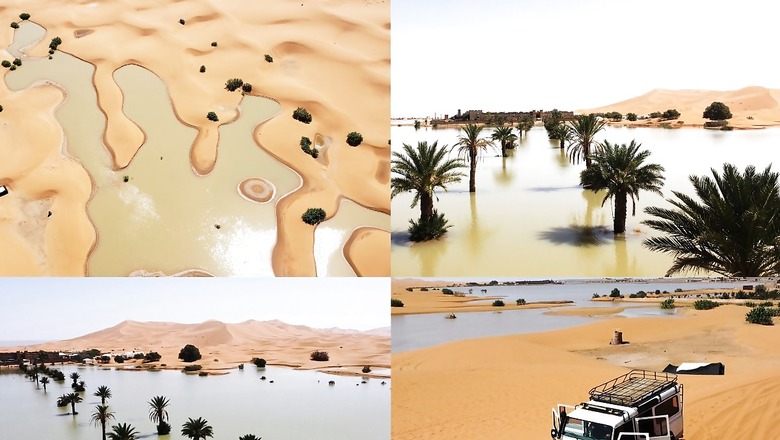
views
A rare deluge of rainfall in some parts of the Sahara Desert has left blue lagoons of water amid the palm trees and sand dunes, nourishing some of its driest regions with more water than they had seen in close to five decades.
The largest hot desert on the planet, located in the North African region, is among the most arid places in the world and rarely experiences rain in late summer. The Moroccan government said two days of rainfall in September exceeded yearly averages in several areas that see less than 10 inches annually, including Tata, one of the areas hit hardest.
Water gushes through sand dunes after a rare rainfall in the #Sahara desertA rare deluge of rainfall left blue lagoons of water amid the palm trees and sand dunes of the Sahara desert, nourishing some of its driest regions with more water than they had seen in decades. pic.twitter.com/1HrGxOo72D
— Mina (@Mina696645851) October 9, 2024
Heavy rain is moving across… the Sahara Desert?Mali and Mauritania are experiencing unusually high levels of rainfall right now.
This may be one reason why the Atlantic has had so few hurricanes so far. Tropical waves, which often develop into hurricanes, have not been… pic.twitter.com/iyAxYFJn3W
— Zoom Earth (@zoom_earth) September 5, 2024
‘It’s been 30 to 50 years’
In Tagounite, a village about 450 kilometers south of the capital, Rabat, more than 3.9 inches was recorded in a 24-hour period. The storms left striking images of water gushing through the Saharan sands amid castles and desert flora. NASA satellites showed water rushing in to fill Lake Iriqui, a famous lake bed between Zagora and Tata that had been dry for 50 years.
In desert communities frequented by tourists, 4x4s motored through the puddles and residents surveyed the scene in awe. “It’s been 30 to 50 years since we’ve had this much rain in such a short space of time,” said Houssine Youabeb of Morocco’s General Directorate of Meteorology.
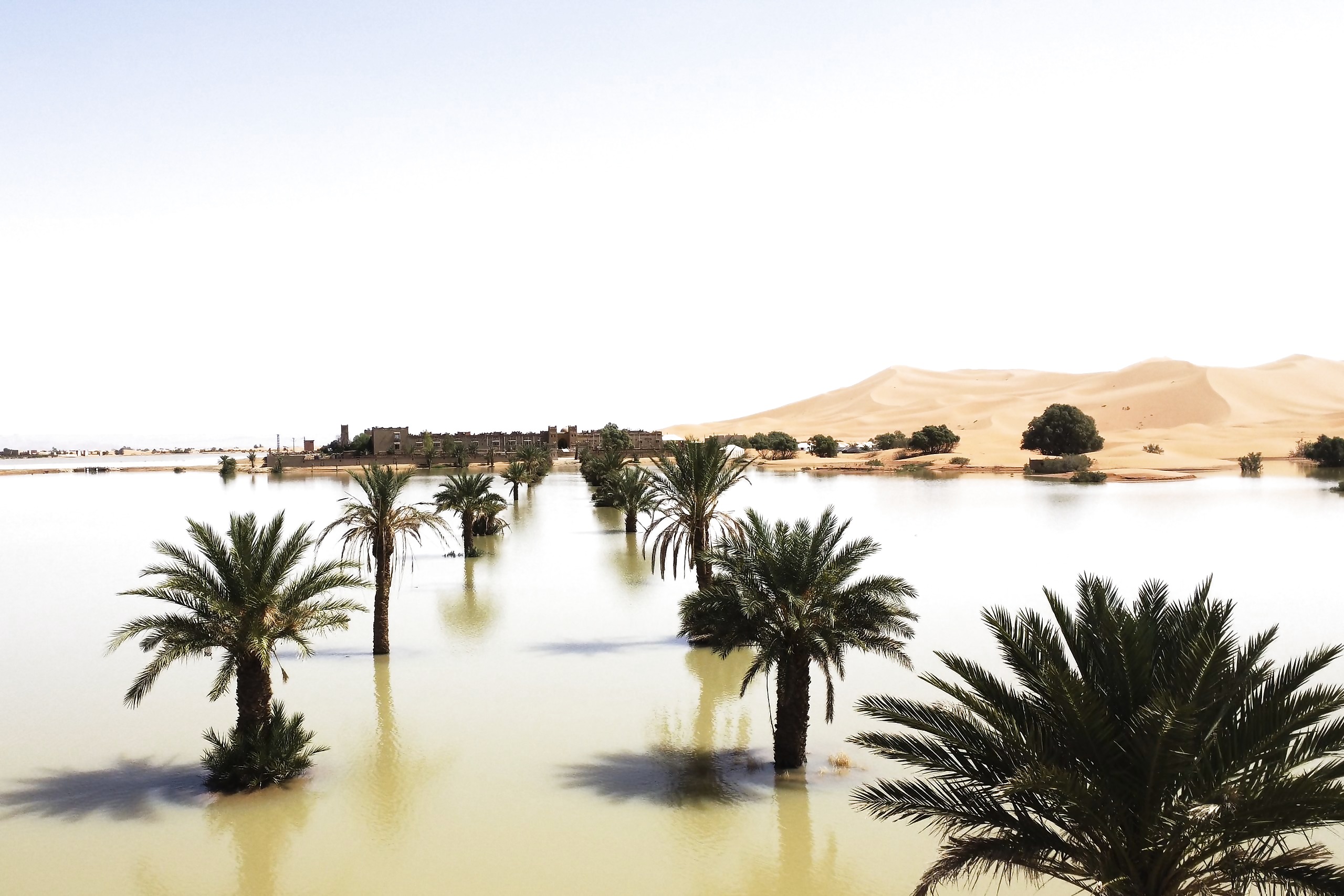
Palm trees are flooded in a lake caused by heavy rainfall in the desert town of Merzouga, near Rachidia, southeastern Morocco, Wednesday, Oct. 2, 2024. (AP Photo)
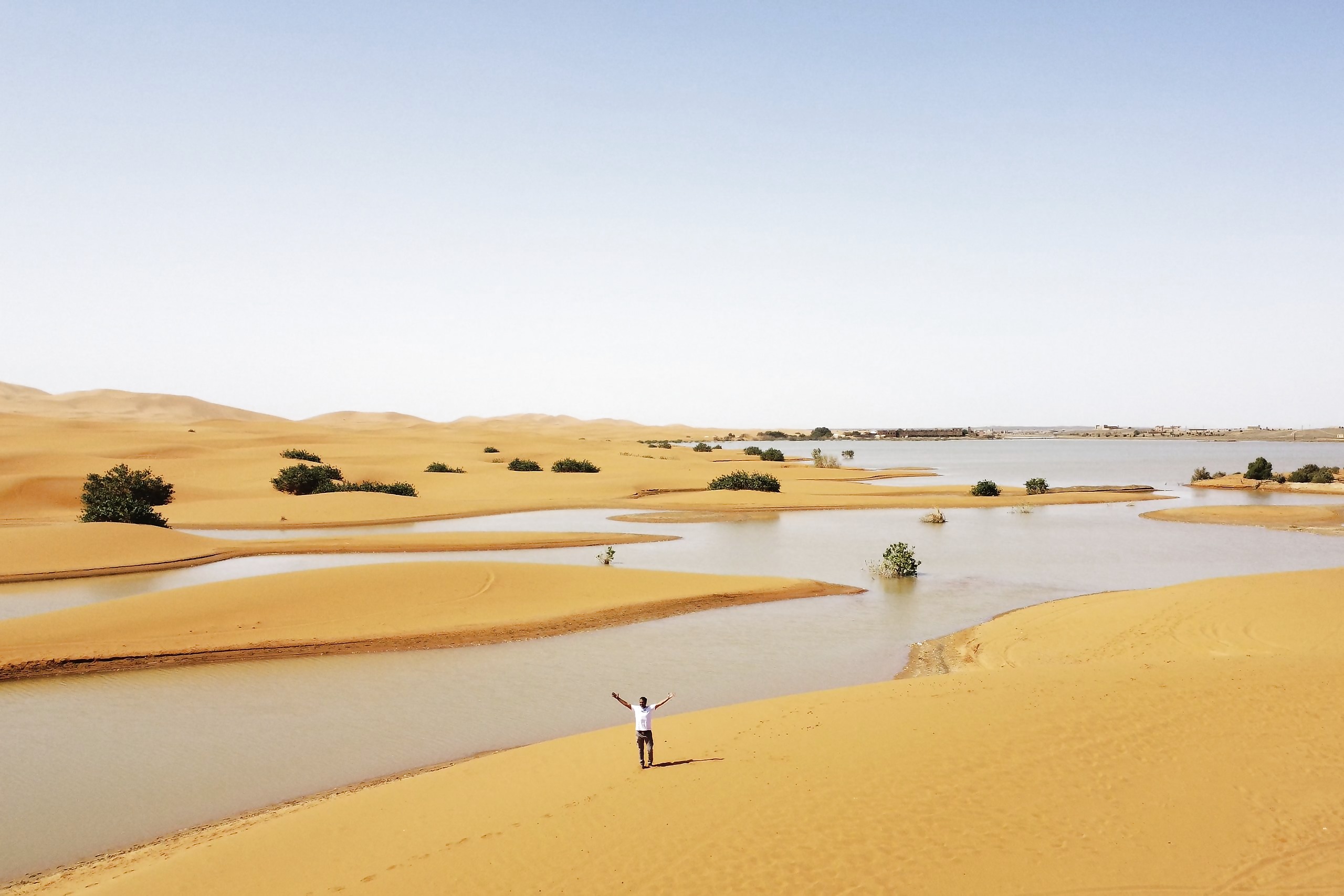
Consecutive years of drought
Such rains, which meteorologists are calling an extratropical storm, may change the course of the region’s weather in months and years to come as the air retains more moisture, causing more evaporation and drawing more storms, Youabeb said.
Six consecutive years of drought have posed challenges for much of Morocco, forcing farmers to leave fields fallow and cities and villages to ration water. The bounty of rainfall will likely help refill the large groundwater aquifers beneath the desert that are relied upon to supply water in desert communities.
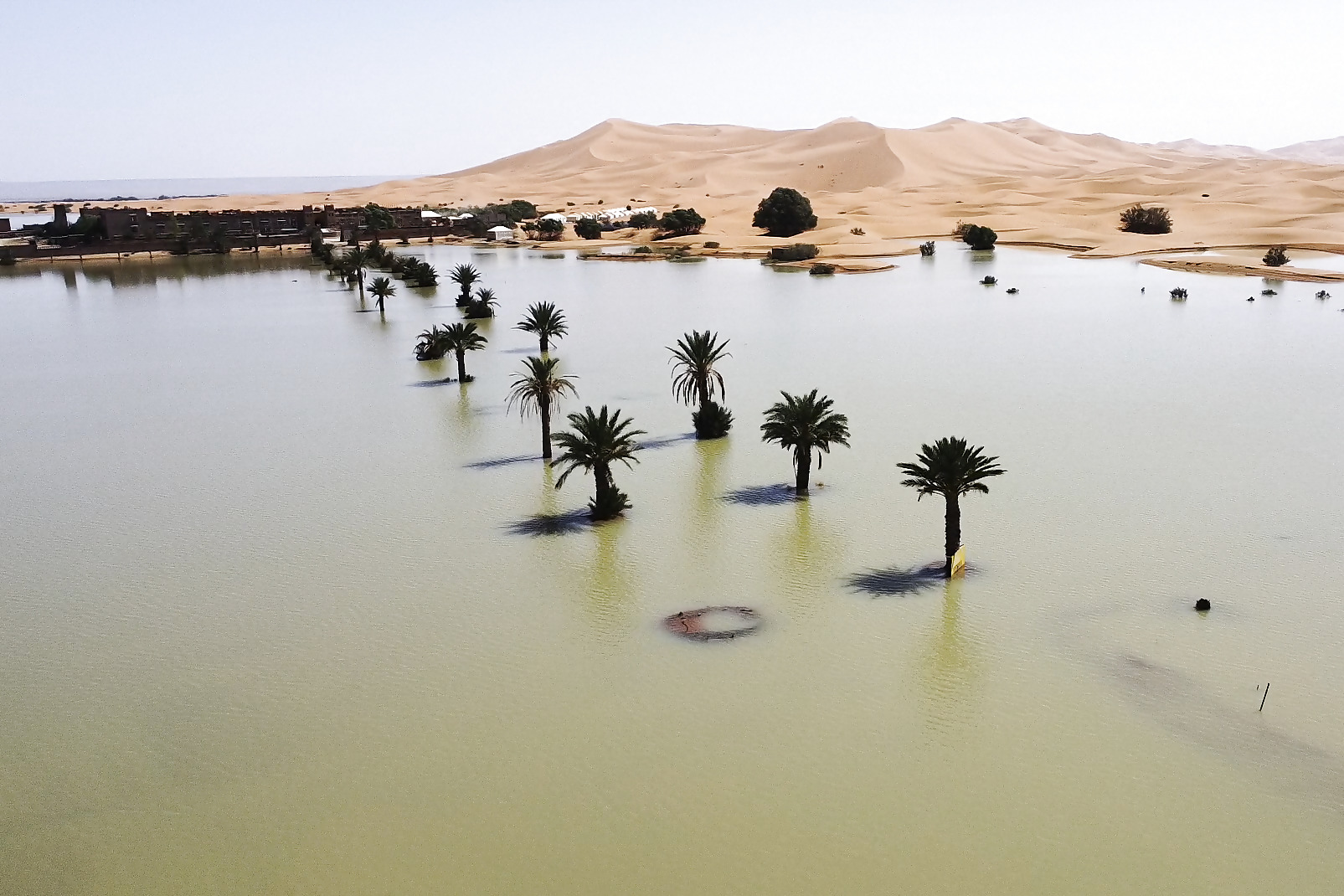
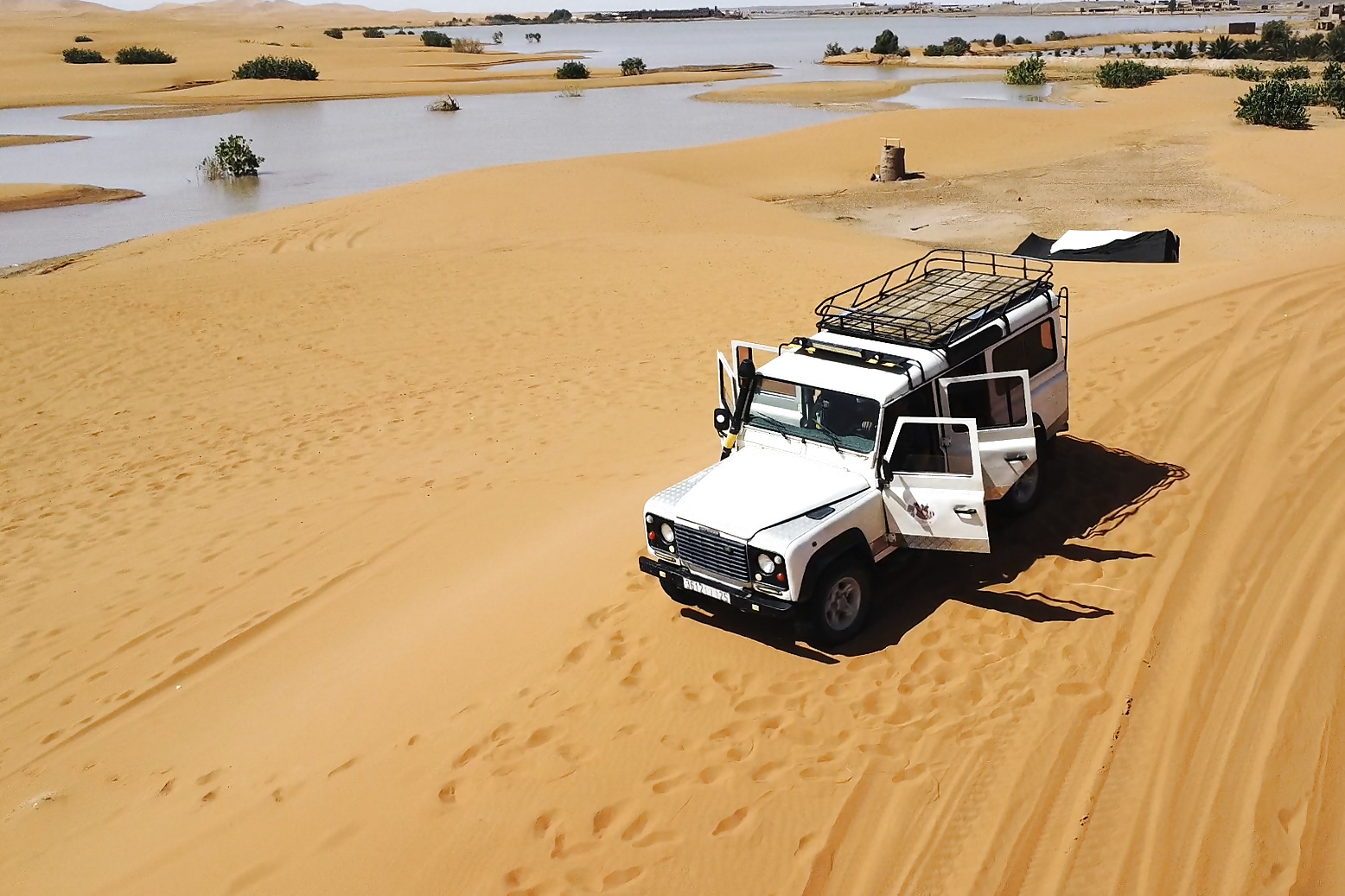
The region’s dammed reservoirs reported refilling at record rates throughout September. However, it’s unclear how far September’s rains will go toward alleviating drought. Water gushing through the sands and oases left more than 20 dead in Morocco and Algeria and damaged farmers’ harvests, forcing the government to allocate emergency relief funds, including in some areas affected by last year’s earthquake.
(With agency inputs)















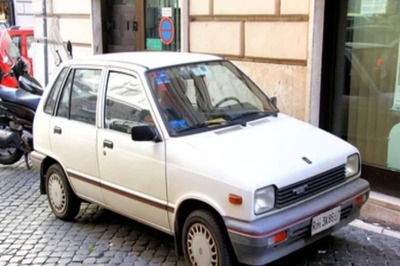


Comments
0 comment